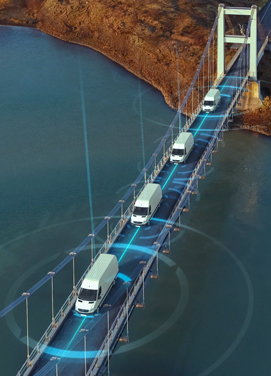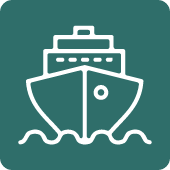
CAT poses a number of challenges for all transport modes. These include the development of technologies of hardware and software, vehicle infrastructure, data communication and decision-making levels, as well as validation of these technologies and the real-world testing in individual mobility, passenger and freight transport.
In road transport, the interaction of drivers, passengers and other road users with automated vehicles has to be understood and addressed in the engineering process. The long life-expectancy of rail rolling stock and infrastructure, the differences in legacy systems and the diversity of operational rules in various European countries may slow down the speed of deploying connected and automated systems.
While there has been an upsurge in automated, remote control technologies in waterborne transport, activities have mostly concerned testing, there has been few vessel deliveries using these technologies.
The Strategic Transport Research and Innovation Agenda (STRIA) Roadmap on Connected and automated transport 2019 builds on and further develops the research and innovation initiatives outlined in the 2017 STRIA CAT Roadmap. It explains the actions needed to overcome the challenges and gaps in CAT in the European transport sector.
The CAT roadmap focuses on actions that will develop technologies and support their swift deployment while ensuring the competitiveness of the European industry and enable potentially disruptive innovation that may lead to new transport services. This will provide a framework that contributes to the decarbonisation of the European transport sector allowing EU energy and climate targets to be met.
The roadmap indicates what needs to be done to close the gaps and seize the opportunities for CAT in Europe. The three modes considered in this roadmap, road, rail and waterborne transport, do not only have different spatial dimensions but also different technologies, physical infrastructures and human interaction, business and legal frameworks.
The concepts and approaches for the introduction of CAT, therefore, differ according to the mode. These differences are reflected in the thematic areas for each mode in the roadmap. The aviation is not explicitly covered, however it is taken into account for what regards cross-modal collaboration.
- In-vehicle enablers
- Vehicle validation
- Large scale demonstration pilots to enable deployment
- Shared, connected, and automated mobility services for people and goods
- Socio-economic impacts and user/public acceptance
- Human factors
- Physical and digital infrastructure and secure connectivity
- Big data, artificial intelligence, and their applications
- Rolling stock enablers for remote control of train operation and autonomous train operation
- Environment and operating monitoring
- Large scale demonstrations to enable EU-wide deployment
- Railway network information, management, maintenance, and control
- Socio-economic and environmental impacts and user/public acceptance
- Human factors
- Physical and digital infrastructure and secure connectivity
- Big data, artificial intelligence, and their applications
- Safety
- In-vessel enablers
- Condition and operational monitoring
- Validation and large-scale demonstration to enable deployment
- Electronic information exchange and certification
- Socio-economic impact of CAT
- Changed working conditions
- Physical and digital infrastructure
- Big data, artificial intelligence, and their applications
- Secure connectivity
Data at-a-glance
TRIMIS Data at-a-glance presents the main transport research and innovation indicators based on TRIMIS data. Find out more about the geographical distribution of European Union transport research and innovation funding, discover the organisations involved in transport research activities and the evolution of funding. Discover the TRIMIS overview for overall data and the seven STRIA Roadmaps.
Further details are available in the full TRIMIS Dashboard.




